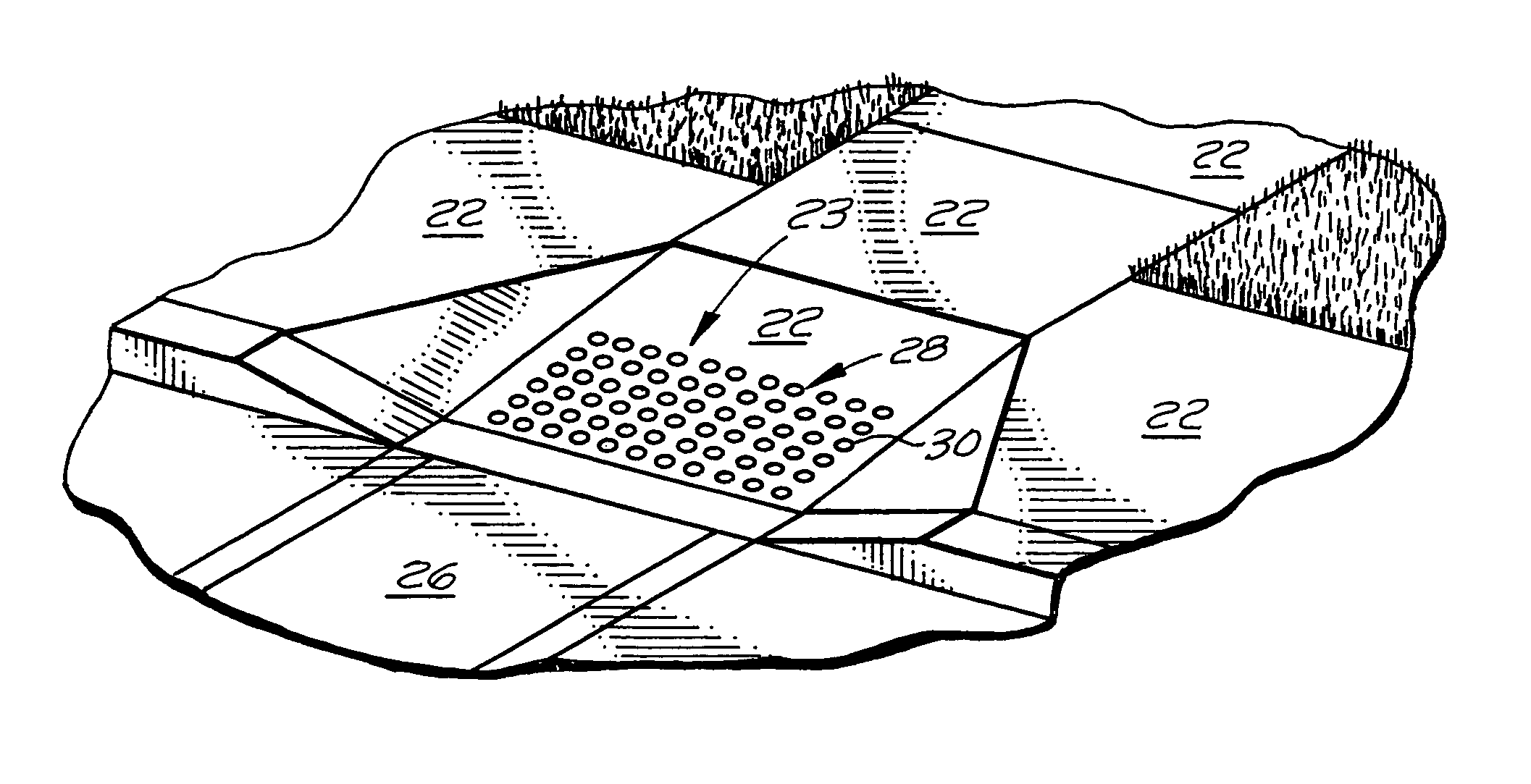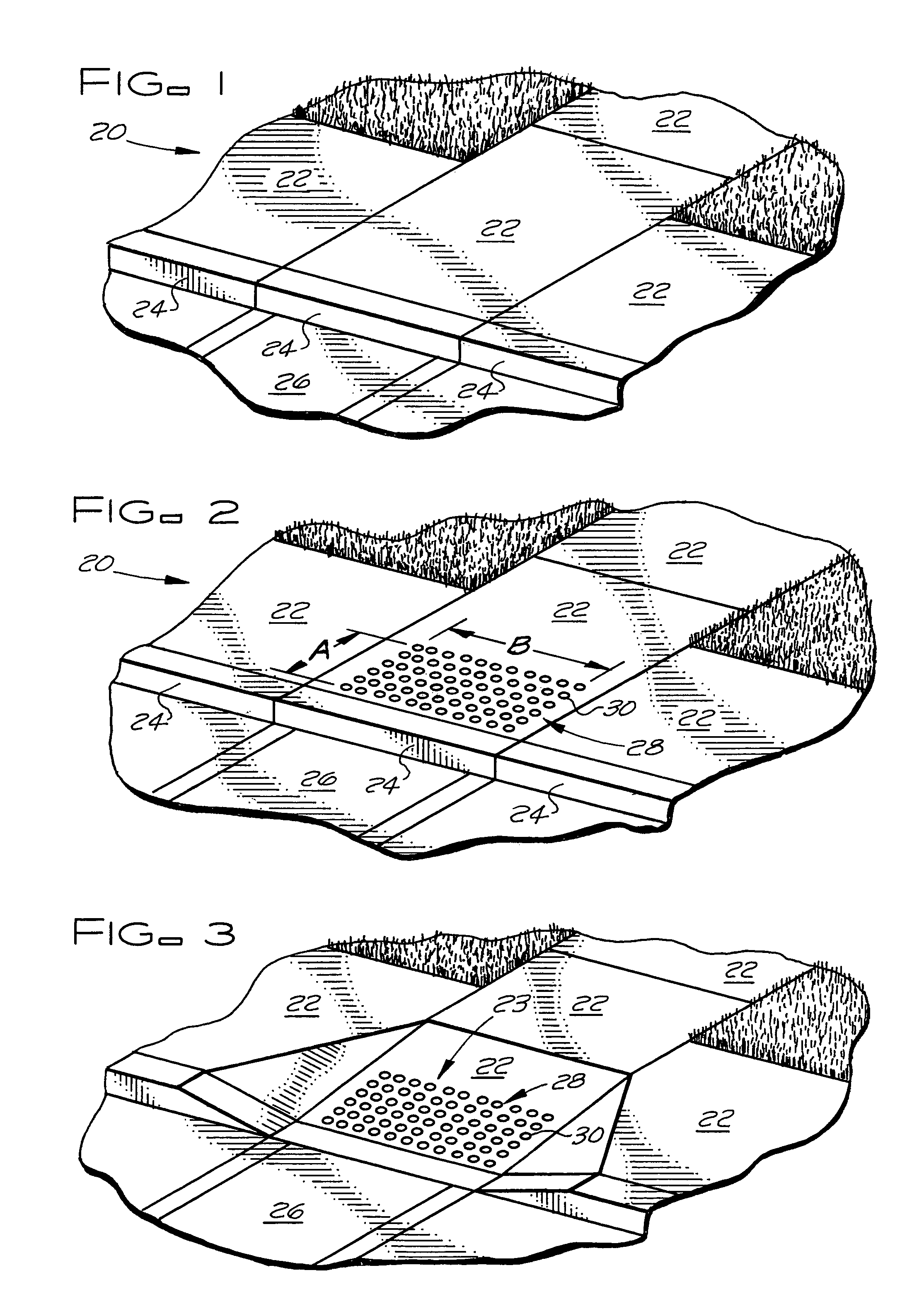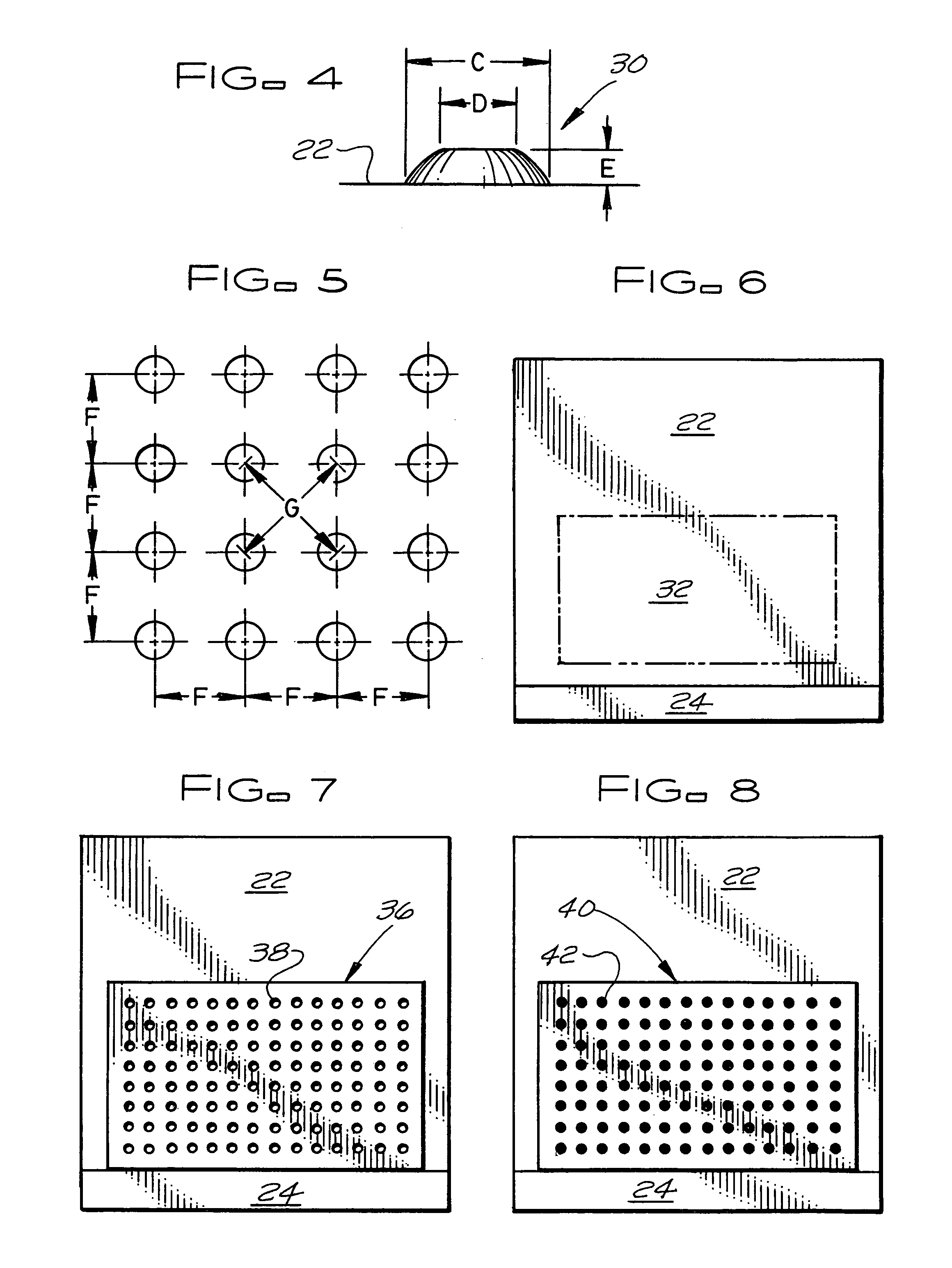Tactile warning surfaces for walkways and method
- Summary
- Abstract
- Description
- Claims
- Application Information
AI Technical Summary
Benefits of technology
Problems solved by technology
Method used
Image
Examples
Embodiment Construction
[0023]FIG. 1 is an example of a walkway made of concrete slabs for which the method of the subject invention can be used to make a tactile warning surface structure of the subject invention. In the example shown, the walkway is a sidewalk 20 of concrete slabs 22 and a curbing 24. The sidewalk 20 is located adjacent a potentially hazardous area for people who are visually impaired or blind, in this case a pedestrian crosswalk 26 crossing a street, to warn them that they are approaching a hazardous area. The sidewalk 20 can be a newly constructed sidewalk, provided the concrete of the slabs 22 has sufficiently set and cured to permit drilling, or the sidewalk can be an existing sidewalk being retrofitted with a tactile warning surface.
[0024]FIG. 2 shows the sidewalk 20 of FIG. 1 with a tactile warning surface structure 28 of the subject invention installed in a concrete slab 22 of the sidewalk that is located adjacent the crosswalk 26. The tactile warning surface structure 28 is forme...
PUM
 Login to View More
Login to View More Abstract
Description
Claims
Application Information
 Login to View More
Login to View More - R&D
- Intellectual Property
- Life Sciences
- Materials
- Tech Scout
- Unparalleled Data Quality
- Higher Quality Content
- 60% Fewer Hallucinations
Browse by: Latest US Patents, China's latest patents, Technical Efficacy Thesaurus, Application Domain, Technology Topic, Popular Technical Reports.
© 2025 PatSnap. All rights reserved.Legal|Privacy policy|Modern Slavery Act Transparency Statement|Sitemap|About US| Contact US: help@patsnap.com



